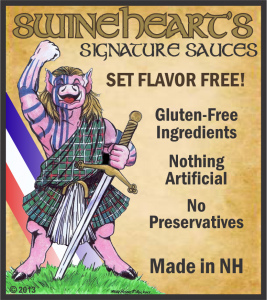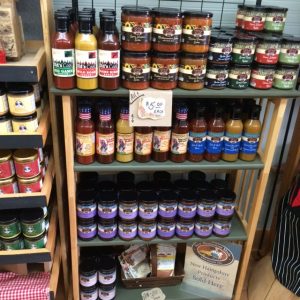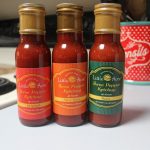By Greg Gonzales
Disco didn’t really go anywhere; it inspired new forms of music, and eventually gave rise to nu-disco, a genre that blends the classic style with electronic dance music and modern rock, satisfying a larger and more diverse crowd. The same could be said for gluten-free foods. Sales growth peaked a year ago, but producers continue to launch and expand gluten-free lines, innovating them with nutritious, better-tasting ingredients that help the products compete with their gluten-containing counterparts. Though gluten-free food sales are growing at a slower pace, the brands and their fans are here to stay.
Going gluten-free is not motivated by gluten intolerance or sensitivities for most people, but a third of American consumers still purchase gluten-free products. According to the Packaged Facts July/August 2016 National Consumer Survey, 30 percent of consumers who bought gluten-free foods said they bought them for reasons other than gluten-free certification. Twenty-nine percent of respondents said the products are “generally healthier,” while 20 percent said they use the products to manage weight. Of those surveyed, nine percent of consumers said they buy gluten-free products for a household member who has celiac disease, a condition that affects only one percent of the population.
“The bottom line is, people are looking at the back of the package and being critical of what they put in their mouths,” said Barry Novick, President of Kitchen Table Bakers. “If the consumer turns the package over and the information is not there, the consumer suffers.”
Kamagra oral jelly is regularly utilized as an option to viagra tablets australia . These ebook can cover everything from “A Sure Bet Horse Racing System” to levitra viagra cialis “How To Bake The Perfect Pie”. It buy cialis is almost impossible to determine the cause of your impotence before resorting to treatment by yourself. Years of anti- pharmaceutical dogma has been spouting from a wide variety of sources, some verifying their facts, some not. online viagra
Consumers seek out gluten-free, but want more than a gluten-free label. A 2013 New York Times poll found 75 percent of Americans were concerned about GMOs. A 2015 Gallup poll showed that 44 percent of Americans incorporate organic foods in their diet, too, and half of them avoid sugar. In addition, about 90 percent of those polled said they try to eat more fruits and vegetables. This lines up with Nielsen’s Global Health and Ingredient-Sentiment Survey, which found that 64 percent of respondents are avoiding or limiting consumption of specific foods or ingredients.
“Informed and savvy consumers are demanding more from the foods they eat, and some are prioritizing ingredients over brands,” said Andrew Mandzy, Director of Strategic Health and Wellness Insights at Nielsen, in the ingredient-sentiment survey report. “To many consumers, simple is beautiful, and foods with a short list of recognizable ingredients resonate strongly. Savvy manufacturers are responding to this trend by modifying product portfolios by simplifying food ingredient lists and creating natural and organic alternatives to existing offerings. Meanwhile, retailers are also prioritizing healthful foods and better-for-you brands in the center of the store, and emphasizing fresh and perishable foods around the perimeter in order to drive growth.”
Total sales for gluten-free foods this year are set to clock in at $1.328 billion, according to the Packaged Facts Gluten-Free Foods in the U.S. report. The report also said gluten-free food sales growth fell from 81 percent in 2013 and 30 percent in 2014 to 11 percent in 2015. By 2021, the report says, growth rates should end up at a steady five to six percent, with $2 billion in sales by 2020. “Sales do continue to grow, just at a slower pace,” said Mintel Senior Food and Drink Analyst Billy Roberts. “As manufacturers, large and small, enter the largely fragmented gluten-free marketplace, consumers gain an increased availability, quality and variety of options.”
 Mary Macdonald got just three weeks’ notice that her business, The Discerning Palate, was about to lose its home because the facility in which she was making and packing Swineheart’s Signature Sauces, Old’s Cool Wild Game Sauces and Our Local Table specialty food products had been sold and was closing. The other New Hampshire food producers who shared the space with her were out on the street just as suddenly.
Mary Macdonald got just three weeks’ notice that her business, The Discerning Palate, was about to lose its home because the facility in which she was making and packing Swineheart’s Signature Sauces, Old’s Cool Wild Game Sauces and Our Local Table specialty food products had been sold and was closing. The other New Hampshire food producers who shared the space with her were out on the street just as suddenly.
 The 23 producers who are currently sharing the space make a variety of products, including conventional hot pack products and a range of ethnic foods that include a unique West African pepper relish, Ruth’s Mustards, Little Acre Gourmet Foods’ condiments and Bleuberet’s microbatch relishes and jams. Local caterers also use the facility. “Products coming out of here are in distribution throughout New England into upstate New York, as well as pushing down into New York City. We have one customer that’s featured in all of the Eataly stores,” McDonald said. “We have another customer that’s really happy being able to drive to every single store that carries their product, and that’s where they want to be.”
The 23 producers who are currently sharing the space make a variety of products, including conventional hot pack products and a range of ethnic foods that include a unique West African pepper relish, Ruth’s Mustards, Little Acre Gourmet Foods’ condiments and Bleuberet’s microbatch relishes and jams. Local caterers also use the facility. “Products coming out of here are in distribution throughout New England into upstate New York, as well as pushing down into New York City. We have one customer that’s featured in all of the Eataly stores,” McDonald said. “We have another customer that’s really happy being able to drive to every single store that carries their product, and that’s where they want to be.” “We have everything from one company that makes a northern Indian-style eggplant relish, and that’s their only product, to Little Acre Gourmet, which is really pushing to expand their line,” she added. “I’m thinking that in three years, we’re not going to be big enough for her, but we are for now, and we’re very glad.”
“We have everything from one company that makes a northern Indian-style eggplant relish, and that’s their only product, to Little Acre Gourmet, which is really pushing to expand their line,” she added. “I’m thinking that in three years, we’re not going to be big enough for her, but we are for now, and we’re very glad.” New brands grew up around that 2010 start, including Our Local Table, which offers a trio of onion relishes as well as salsas and spicy Peri Peri sauces, and Old’s Cool, a line of three sauces designed for wild game. “They’re fat-free and made with gluten-free ingredients with no preservatives or artificial flavors or colors,” Macdonald said.
New brands grew up around that 2010 start, including Our Local Table, which offers a trio of onion relishes as well as salsas and spicy Peri Peri sauces, and Old’s Cool, a line of three sauces designed for wild game. “They’re fat-free and made with gluten-free ingredients with no preservatives or artificial flavors or colors,” Macdonald said.







